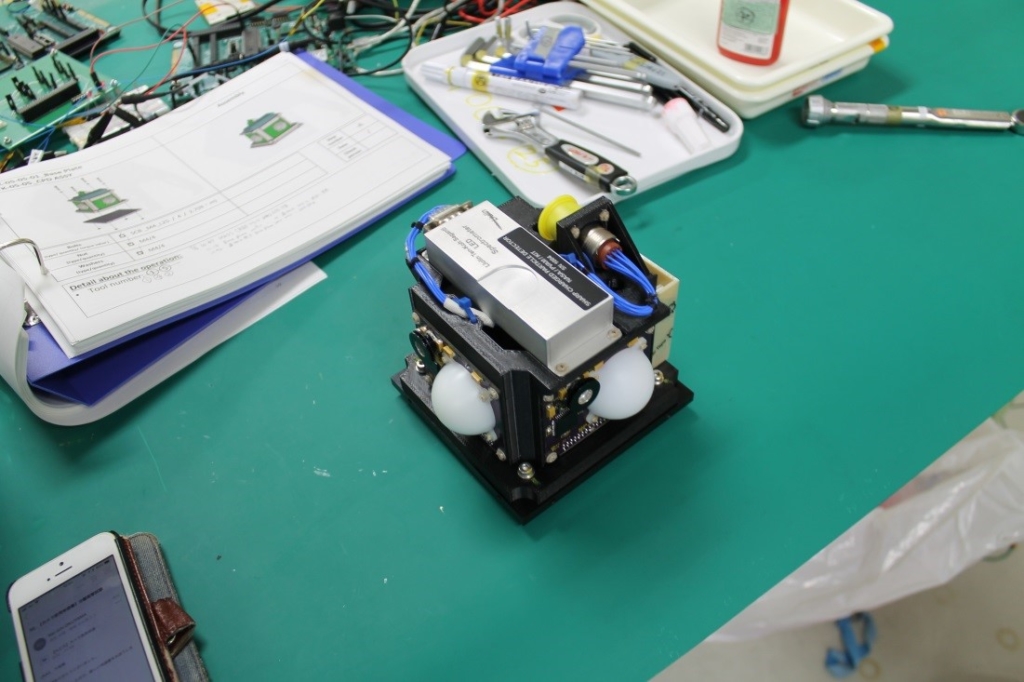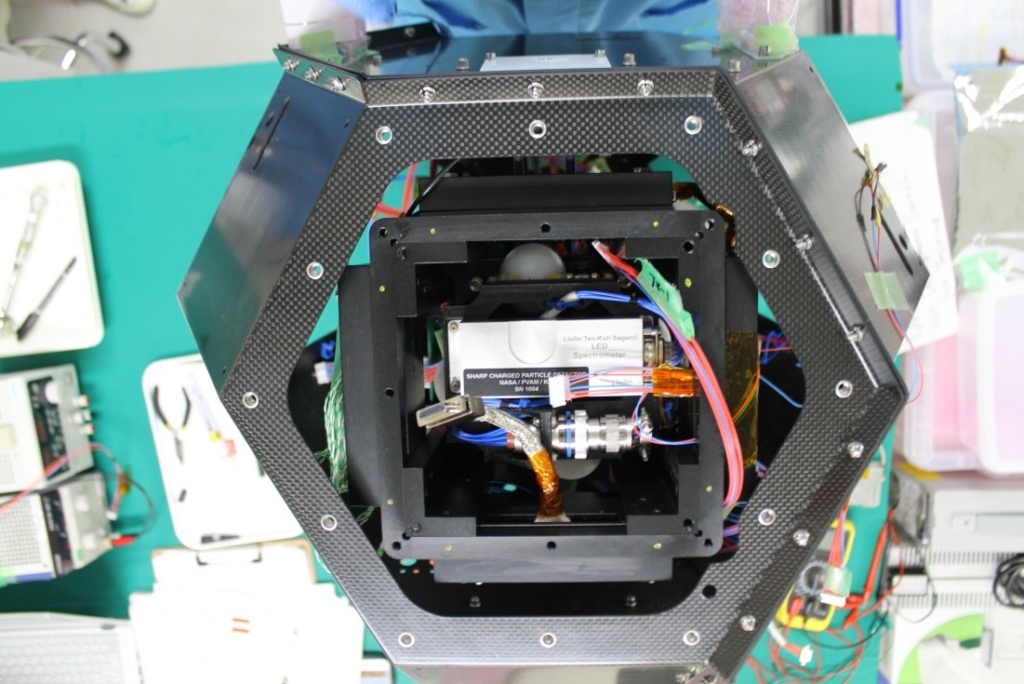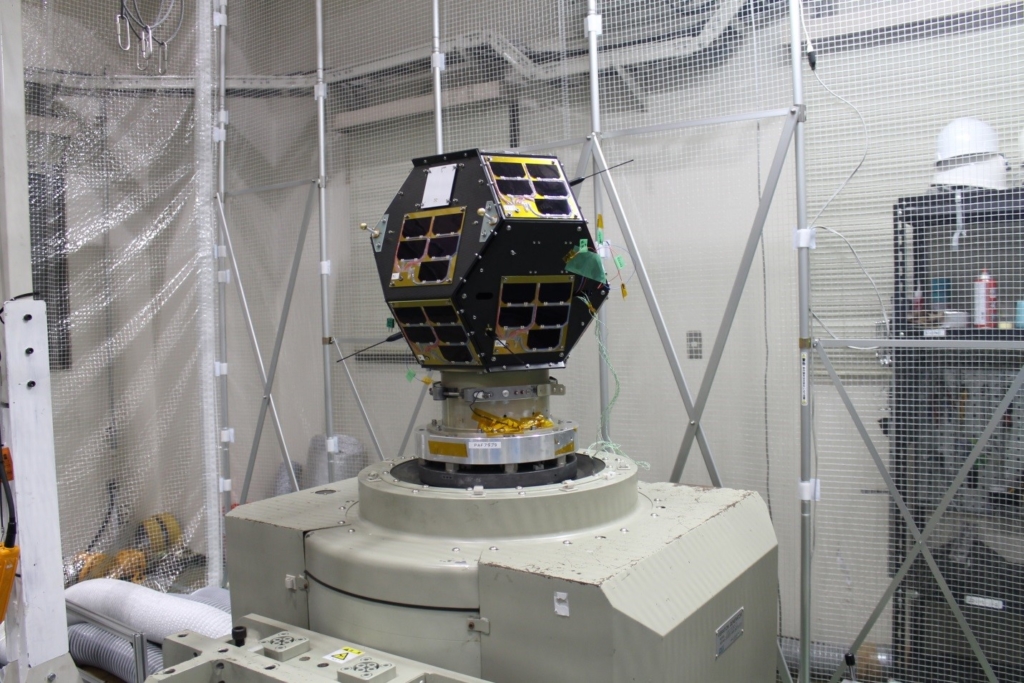SOLAR AND HELIOSPHERIC ASSESSMENT OF RADIATION PARTICLES (SHARP)
CHARGED PARTICLE DETECTOR (CPD)
The first of its kind, SHARP-CPD is launched as part of the Ten-Koh Spacecraft of Kyushu Institute of Technology, KIT-Japan, for Earth’s Polar Orbit on October 29, 2018 by JAXA, Japan. This unique payload is comprised of six Radiation Sensors, two X-Ray Detectors, and one Particle Spectrometer. This groundbreaking combination of sensors can be best categorized into seven main features:
- The Liulin particle spectrometer, custom developed by the Bulgarian Academy of Sciences (BAS), will collect radiation measurements in conjunction with PVAMU’s six other Radiation Sensors for an even more dimensional comparison.
- One set of two radiation sensors is covered with polyethylene spheres that will be collecting data on radiation shielding effectiveness over time.`
- Another set of two sensors is covered with polystyrene for assessing dose measurement over an extended time period.
- There are two open sensors to gather ambient radiation measurements.
- The SHARP-CPD payload’s pioneering design also features a set of two sensors integrated with scintillating material for detecting X-Rays in the polar orbit.
- The entire frame structure is built with a 3-D printed PEKK material for low-static electrical interference that allows for the best possible data collection to date.
- Finally, this payload boasts in-flight command control capability, allowing access to manage data collection protocols of all sensors independently.
The design and development of this payload was accomplished from May 2017 thru May 2018 as a collaborative effort of the Texas A&M University (TAMU) Chancellor’s Research Initiative (CRI) at Prairie View A&M University (PVAMU), Radiation Institute for Science and Engineering (RaISE), and NASA Johnson Space Center, for the Ten-Koh spacecraft of the Kyushu Institute of Technology (KIT) for a polar orbit launch by the Japan Aerospace Exploration Agency (JAXA), Japan.
The Ten-Koh Satellite of KIT-Japan will be launched by JAXA into the Low Earth Polar Orbit at 93 degrees and an approximate altitude of 600 km. The PVAMU payload will be the primary radiation science investigation instrument on the Ten-Koh spacecraft.
For LIVE Tracking and 10 Day Future Predictions of Ten-Koh Spacecraft from your location, CLICK HERE.
Our CPD Payload with JAXA approved documentation and tools for installation on the Ten-Koh spacecraft at KIT-Japan (Picture taken at KIT-Japan in May 2018).
Our CPD Payload after being installed into the main frame of the spacecraft prior to vacuum and thermal tests at KIT-Japan (Picture taken at KIT-Japan in May 2018).
Ten-Koh spacecraft at KIT-Japan being prepared with other accompanying payloads for Vibration Testing (Picture at KIT-Japan in May 2018)
Data Transmission and Tele Links
Watch First Ten-Koh Command Transmission and Data Down-link over KIT-Japan (31 Oct 2018) – here
Watch Overview of Signal Acquisition (31 Oct 2018) – here
Listen to First Audio Signal from Ten-Koh in orbit – Received in Argentina (29 Oct 2018) – here
View the First Visual Signal of Ten-Koh in orbit – Received in Argentina (29 Oct 2018) – here
Launch Information
Watch a snippet of the Launch (29 Oct 2018) – here
Watch an Overview Video of the Engineering Model and Payloads (27 Oct 2018) – here
Watch Launch broadcast – here
Read Live Launch information – here
News Articles
Read the article published in the Bulgarian ministry of Education and Science newspaper , “Az Buki” (29 Nov, 2018) – here
Read the article published in a Japanese newspaper, “Mainichi” (29 Oct, 2018) – here
Read the article published by Mexican Space Agency – here
Read the article published in the Prairie View A&M University blog – here
Read the article published in the Prairie View A&M Research-Briefs-Vol 2(1) April 2019 – here
Publications
Gonzalez-Llorente, Jesus, Aleksander A. Lidtke, Ken Hatanaka, Ryo Kawauchi, and Kei-Ichi Okuyama. “Solar Module Integrated Converters as Power Generator in Small Spacecrafts: Design and Verification Approach.” Aerospace 6, no. 5 (2019): 61. Read Here
TAPIA, Isai FAJARDO, Sidi AHMED BENDOUKHA, Kei-Ichi OKUYAMA, Prem-kumar SAGANTI, Doug HOLLAND, Tsvetan DACHEV, Akiko FUJIMOTO et al. “Development of a set of instruments for a Small Satellite mission to observe the LEO environment in the presence of a decreasing solar cycle.” June 2019 (In Press)
Pictures
Read more info about this mission from KIT-Japan: Kyushu Institute of Technology (KIT-Japan): Ten-Koh



